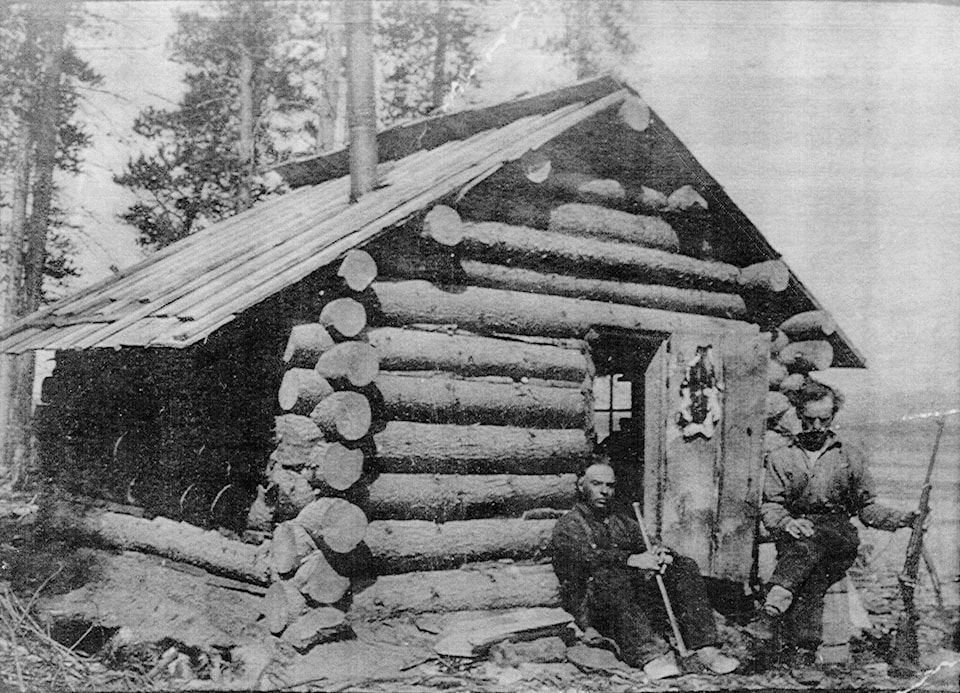Trapping was a lucrative business here in the early 20th Century.
In 1918, the number of marten in this area spiked when demand for fur was at an all-time high. With the price of a single pelt hovering around $100 – the equivalent of $1,500 today – men (and a few women) took to the bush in droves.
The following May, after one of the best seasons in recent memory, trappers from across the region traveled to Burns Lake to sell their furs. The only establishment large enough to accommodate them all was the Cheslatta Hotel owned by Trygarn Pelham Lyster (Barney) Mulvany.
Mulvany met the trappers as they arrived in town and rented them the hotel’s ‘Snake’ room, where they slept on the floor and passed around 350-proof rum.
Fur buyers from as far away as New York soon arrived to bid on the winter’s catch. When the sale finally got underway, $50,000 worth of marten pelts (the equivalent of $762,000 today) hung from the ceiling. The Cheslatta’s Chinese cook was driven nearly out of his mind coping with the appetites and dispositions of his hungry customers, many of whom hadn’t enjoyed a good meal in months.
The buyers and sellers negotiated for three days. When the sale concluded, trappers who a year earlier had little more than the tools of their trade were suddenly wealthy.
With so much cash in their pockets, many took to gambling. A poker game ran round-the-clock at fur buyer George McKenzie’s store, and jackpots as high as $1,000 were common. In the dance hall upstairs, mountain men and local girls partied to the accompaniment of one Hawaiian guitar.
With so much money changing hands, some enterprising souls in the village decided to hold a basket social to raise funds for education. Local women hastily filled 22 baskets with a variety of delicacies and took them to McKenzie’s dance hall.
Mulvany, who was to serve as auctioneer, invited the trappers to participate. The latter reluctantly agreed, arriving just as bidding was getting underway.
Many of the town’s eligible bachelors had hoped to purchase the baskets, but their pockets simply weren’t deep enough. Trappers and fur buyers bought every one of the pre-made meals, sometimes paying as much as $75 for two sandwiches and a piece of cake wrapped in wax paper.
It was common practice for successful bidders to share the contents of these baskets with the women who made them. The trappers, however, weren’t familiar with basket social etiquette; they simply collected their winnings and retired to the Cheslatta Hotel for a feast.
Mulvany followed the hungry men back to the hotel. He tried to convince them to return to the social (with the food, of course), but to his consternation found that most of the grub had already been consumed.
“Here, you guys, what kind of sports do you think you are?” he told the assembled trappers. “Don’t you know that you only bought a half interest in those baskets? Take your basket back to the girl who made up the one you bought. She is supposed to be the partner of the man who bought her basket, and he is responsible for her entertainment. Come on, now. Help and get this dance going.”
The men complied. The dance that followed, according to Mulvany, was such a “howling success” that the ceiling of McKenzie’s store had to be braced with posts to prevent its collapse.
The event was the climax of the rendezvous. Most of those who attended the basket social went home hungry, the trappers returned to their cabins with a little less money, and Burns Lake got a new school.
© 2019 Michael Riis-Christianson and the Lakes District Museum Society
